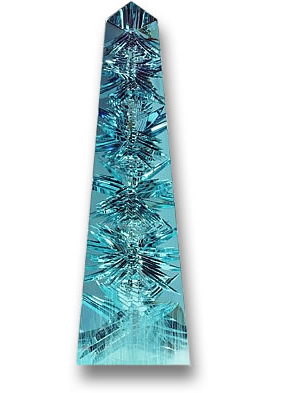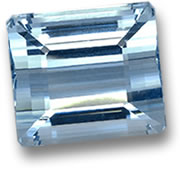The Dom Pedro Aquamarine: Making Waves
Introduction

The Dom Pedro Aquamarine stands out as the world's largest aquamarine gem. It measures an impressive 13.75 inches tall and 4 inches wide, with a weight of 10,363 carats. That's quite a hefty piece, right? But get this - the original rough crystal was about a meter long before it was shaped. This remarkable aquamarine boasts a deeply saturated azure color and required 10 months of careful work to transform it into a stunning sculpted piece.
What is Aquamarine?

Aquamarine belongs to the beryl family, just like emerald. While emerald gets its green from chromium, aquamarine's blue-green shade comes from iron. The name "aquamarine" draws from the Latin "aqua marina," which means seawater, capturing that ocean-like tone perfectly. People often seek out aquamarines with deep, rich colors, though such intensity is uncommon in bigger stones. Interestingly, many folks go for lighter shades, even as most colored gems are prized for their bold hues. As you can see in images, color saturation in aquamarine can shift within the same crystal, typically darker toward the base. Yet, the Dom Pedro Aquamarine looks darker at the top due to how it was cut - flipped because of tubular inclusions higher up in the original crystal.
For in-depth facts, figures, and stories about this gem, explore our comprehensive aquamarine information resource.
Disclaimer: Claims about healing or spiritual properties of gemstones are based on traditional beliefs and have no scientific basis.
If you're considering acquiring one, discover essential details about aquamarine before buying.
Discovery and History
This exceptional aquamarine came from the mines of Minas Gerais in Brazil. It honors the Brazilian emperors Dom Pedro I, known as "the Liberator," and his son, Dom Pedro II, "the Magnanimous." The rough crystal started out around a meter long and was discovered in the 1980s. Soon after, it got dropped by accident and broke into three parts. The two smaller fragments were turned into commercial gemstones and sold. The biggest chunk, nearly 2 feet long, held real potential. In fact, a second aquamarine of this quality and size might not even exist underground anywhere. So, it deserved an extraordinary treatment to highlight its value.
The Sculpting Process
The Dom Pedro Aquamarine isn't just a gem - it's a sculpted masterpiece created by the celebrated German artist and fantasy lapidarist Bernd Munsteiner from Idar-Oberstein. Munsteiner felt assured about the crystal's durability after its earlier drop, which likely revealed any hidden flaws. He spent four months studying it and sketching designs, then another six months crafting the massive piece. Finished in 1993, Munsteiner gave it another name: "Ondas Maritimas," Portuguese for "Waves of the Sea." And honestly, it does evoke a peak of ocean beauty in full flow.
Current Location
This enormous gemstone obelisk found its way to the Smithsonian in 2011, thanks to a donation from Jane Mitchell and Jeff Bland of Palm Beach, Florida. The couple, avid gem collectors, bought the Dom Pedro Aquamarine in 1999 after selling their thriving surgical tool company, Midas Rex. Apparently, the Brazilian owner had plans to slice it into hundreds of smaller gems to recover costs. But Mitchell and Bland stepped in, preserving it whole and sharing this incredible jewel with the world. Now, it resides in the National Gem Collection Gallery at the Smithsonian National Museum of Natural History in Washington, D.C., holding its place among icons like the Hope Diamond.
Frequently Asked Questions
What makes the Dom Pedro Aquamarine unique?
It's the world's largest aquamarine, sculpted into an artistic obelisk with a deep azure color, measuring 13.75 inches tall and weighing 10,363 carats.
Where was the Dom Pedro Aquamarine mined?
It was discovered in the Minas Gerais region of Brazil during the 1980s.
Who sculpted the Dom Pedro Aquamarine?
The renowned German artist Bernd Munsteiner crafted it over 10 months, naming it "Ondas Maritimas" or "Waves of the Sea."
Where can I see the Dom Pedro Aquamarine today?
It's on display in the National Gem Collection Gallery at the Smithsonian National Museum of Natural History in Washington, D.C.
Why is it named Dom Pedro?
It honors Brazilian emperors Dom Pedro I and Dom Pedro II for their historical significance.
What are the traditional meanings, powers, and uses associated with aquamarine?
Delve into the aquamarine meaning, powers, and uses guide for more insights.
Disclaimer: Information regarding healing or spiritual properties is rooted in folklore and should not be considered medical advice or scientifically verified.

